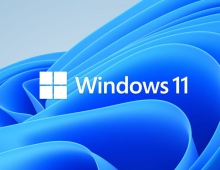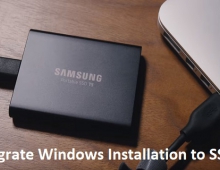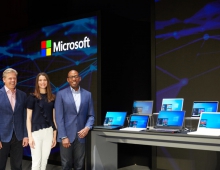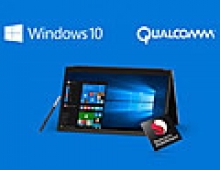Windows XP Professional x64 Edition
19. Application Benchmarks - Pov-Ray
Review Pages
2. System Specifications
3. Product Overview
4. Compatibility
5. Security Issues
6. Gaming Experience
7. Availability And Price
8. Windows Installation
9. Drivers Installation
10. Test System
11. Game Benchmarks - Far Cry
12. Game Benchmarks - Colin McRae 2005
13. Game Benchmarks - Half Life 2
14. Application Benchmarks - 3DMark2003
15. Application Benchmarks - 3DMark2005
16. Application Benchmarks - PCMark04
17. Application Benchmarks - SiSoftware Sandra 2004
18. Application Benchmarks - Science Mark 2
19. Application Benchmarks - Pov-Ray
20. Conclusion
21. Drivers Availability
22. Programs that are not supported
 The Persistence of Vision Ray-Tracer (Pov-Ray) creates three-dimensional, photo-realistic images using a rendering technique called ray-tracing. It reads in a text file containing information describing the objects and lighting in a scene and generates an image of that scene from the view point of a camera also described in the text file. Ray-tracing is not a fast process by any means, but it produces very high quality images with realistic reflections, shading, perspective and other effects.
The Persistence of Vision Ray-Tracer (Pov-Ray) creates three-dimensional, photo-realistic images using a rendering technique called ray-tracing. It reads in a text file containing information describing the objects and lighting in a scene and generates an image of that scene from the view point of a camera also described in the text file. Ray-tracing is not a fast process by any means, but it produces very high quality images with realistic reflections, shading, perspective and other effects.
What is Ray-Tracing? 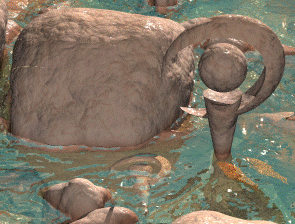
Ray-tracing is a rendering technique that calculates an image of a scene by simulating the way rays of light travel in the real world. However it does its job backwards. In the real world, rays of light are emitted from a light source and illuminate objects. The light reflects off of the objects or passes through transparent objects. This reflected light hits our eyes or perhaps a camera lens. Because the vast majority of rays never hit an observer, it would take forever to trace a scene.
Ray-tracing programs like POV-Ray start with their simulated camera and trace rays backwards out into the scene. The user specifies the location of the camera, light sources, and objects as well as the surface texture properties of objects, their interiors (if transparent) and any atmospheric media such as fog, haze, or fire.
For every pixel in the final image one or more viewing rays are shot from the camera, into the scene to see if it intersects with any of the objects in the scene. These "viewing rays" originate from the viewer, represented by the camera, and pass through the viewing window (representing the final image).
Every time an object is hit, the color of the surface at that point is calculated. For this purpose rays are sent backwards to each light source to determine the amount of light coming from the source. These "shadow rays" are tested to tell whether the surface point lies in shadow or not. If the surface is reflective or transparent new rays are set up and traced in order to determine the contribution of the reflected and refracted light to the final surface color.
Special features like inter-diffuse reflection (radiosity), atmospheric effects and area lights make it necessary to shoot a lot of additional rays into the scene for every pixel.
The below graph displays the time in seconds that the program have to run in order to complete the test.
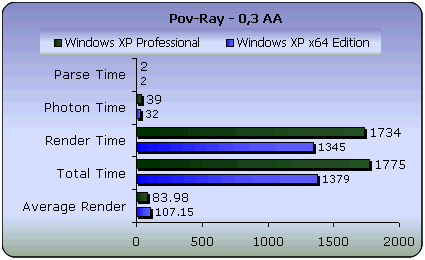
We have also selected this test not only because it is one of the few available for the 64-bit version, but because we want to examine the benefits of the 64-bit architecture regarding rendering images and complex textures while using effects.
In the test, we selected a resolution of 1280x1024 with an antialiasing threshold value up to 0.3 (to speed up antialiasing, a threshold value is used between pixels. If the difference in color between two pixels is higher than the threshold, then antialiasing is calculated). Parse time is the time it takes to parse the project, photon time it takes to render the Photon map. The photon map is used to render true reflective and refractive caustics by shooting packets of light (photons) from light sources into the scene. The Average Render is the average PPS (pixels per second) that the render took.
With Windows XP x64, rendering was finished 7 minutes faster (30 minutes for Windows XP Professional and 23 for Windows XP x64) which makes it 23% faster than Windows XP Professional.
Review Pages
2. System Specifications
3. Product Overview
4. Compatibility
5. Security Issues
6. Gaming Experience
7. Availability And Price
8. Windows Installation
9. Drivers Installation
10. Test System
11. Game Benchmarks - Far Cry
12. Game Benchmarks - Colin McRae 2005
13. Game Benchmarks - Half Life 2
14. Application Benchmarks - 3DMark2003
15. Application Benchmarks - 3DMark2005
16. Application Benchmarks - PCMark04
17. Application Benchmarks - SiSoftware Sandra 2004
18. Application Benchmarks - Science Mark 2
19. Application Benchmarks - Pov-Ray
20. Conclusion
21. Drivers Availability
22. Programs that are not supported



